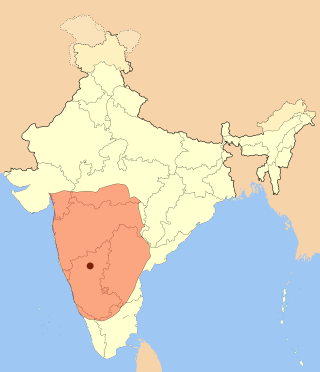Related Research Articles

Year 543 (DXLIII) was a common year starting on Thursday of the Julian calendar, the 543rd year of the Common Era (CE) and Anno Domini (AD) designations, the 543rd year of the 1st millennium, the 43rd year of the 6th century, and the 4th year of the 540s decade. As of the start of 543, the Gregorian calendar was 2 days ahead of the Julian calendar, which was the dominant calendar of the time.

Year 520 (DXX) was a leap year starting on Wednesday of the Julian calendar. In the Roman Empire, it was known as the Year of the Consulship of Rusticus and Vitalianus. The denomination 520 for this year has been used since the early medieval period, when the Anno Domini calendar era became the prevalent method in Europe for naming years.
Peter the Iberian was a Georgian royal prince, theologian and philosopher who was a prominent figure in early Christianity and one of the founders of Christian Neoplatonism. Some have claimed that he is the author known conventionally as Pseudo-Dionysius the Areopagite.

Hilarion the Great (291–371) was an anchorite who spent most of his life in the desert according to the example of Anthony the Great (c. 251–356). While Anthony is considered to have established Christian monasticism in the Egyptian Desert, Hilarion is considered by his biographer Jerome to be the founder of Palestinian monasticism and venerated as a saint exemplifying monastic virtues by the Orthodox and the Roman Catholic Church.
Dorotheus of Gaza or Abba Dorotheus, was a Christian monk and abbot.

Damian of Alexandria was the Coptic pope and patriarch of Alexandria from 576.

Saint Stephen the Sabaite, also known as Stephen the Hymnographer, was a Christian monk from Julis, Gaza, a district of Gaza. He was a nephew of St. John of Damascus and spent a half-century in the monastery of Mar Saba. He is venerated as a saint in the Eastern Orthodox Church.

Barsanuphius, also known as Barsanuphius of Palestine, Barsanuphius of Gaza or Barsanuphius the Great, was a Christian hermit and writer of the sixth century.

Eastern Christian monasticism is the life followed by monks and nuns of the Eastern Orthodox Church, Oriental Orthodoxy, the Church of the East and some Eastern Catholic Churches.
John the Prophet, known also as Venerable John, was an eastern christian hermit of the monastery of Seridus and teacher of Dorotheus of Gaza. He is venerated as a saint in the Roman Catholic and Eastern Orthodox churches
John Rufus, John of Beth Rufina, or John of Maiuma, was an anti-Chalcedonian priest of Antioch, a disciple of Peter the Iberian and an ecclesiastical historian who possibly served as the bishop of Maiuma. He wrote the Plerophoriae, the Life of Peter the Iberian, and the Commemoration of the Death of Theodosius.
Peter of Jerusalem was the Patriarch of Jerusalem from 524 to 544. He held to the Chalcedonian belief.
Theodosius was one of the leading Christian monks of Palestine opposed to the Council of Chalcedon (451). He was installed as bishop of Jerusalem in opposition Juvenal in 451 or 452, but was forced into exile by the emperor Marcian in 453.
The Barsanuphians were a monophysite non-Chalcedonian Christian sect in Egypt between the late 6th and early 9th century.
Isaiah the Solitary, also known as Isaiah of Gaza, Isaias the Solitary, Abba Isaiah, or possibly also Isaiah of Scetis, was a Christian ascetic and monastic writer known from the Sayings of the Desert Fathers and various Palestinian Miaphysite sources. He is canonized as a saint by the Coptic Orthodox Church, with his feast day on the 11th day of the month Abib (Epip) in the Coptic calendar.
Abba Silvanus was a Palestinian Christian monk who lived during the 4th and 5th centuries. He was one of the Desert Fathers.
Christian monasticism first appeared in Egypt and Syria. This is a partial chronology of early Christian monasticism with its notable events listed. It covers 343 years.
The monastery of Seridus was a monastic community that flourished during the 6th and early 7th century in Palestine. Founded by Seridus of Gaza after whom the monastery was later named, it housed in the first half of the sixth century the well-known hermits Barsanuphius and John the Prophet who attracted many visitors.
Zeno the Prophet, also known as Zeno the Wonderworker was an Egyptian monk and a Desert Father. He was disciple of the hermit Silvanus of Gaza, became the spiritual guide of the famous Georgian Peter the Iberian and is venerated as a saint by the Eastern Orthodox Church on 19 June.
The Diocese of Gaza was a bishopric in the Holy Land. Its episcopal see was the city of Gaza and it is now a vacant Latin Catholic titular see.
References
- 1 2 3 4 Bitton-Ashkelony, Brouria; Kofsky, Aryeh (February 2006). The Monastic School of Gaza. Brill. pp. 36–42. ISBN 9789047408444 . Retrieved 12 November 2023.
- 1 2 Kofsky, Arieh; Bitton-Ashkelony, Bruria (2004). Christian Gaza in Late Antiquity. Brill. pp. 76–77. ISBN 9789004138681 . Retrieved 12 November 2023.
- 1 2 3 Storin, Bradley K.; Sogno, Cristiana; Watts, Edward J. (November 2019). Late Antique Letter Collections A Critical Introduction and Reference Guide. University of California Press. ISBN 9780520308411 . Retrieved 13 November 2023.
- ↑ Chryssavgis, John (March 2017). John Climacus From the Egyptian Desert to the Sinaite Mountain. Taylor & Francis. p. 160. ISBN 9781351925211 . Retrieved 12 November 2023.
- ↑ (in Greek) Συναξαριστής. 13 Αυγούστου. ECCLESIA.GR. (H ΕΚΚΛΗΣΙΑ ΤΗΣ ΕΛΛΑΔΟΣ).
- ↑ "Venerable Vitalius of Gaza". Orthodox Church in America. OCA. Retrieved 13 November 2023.